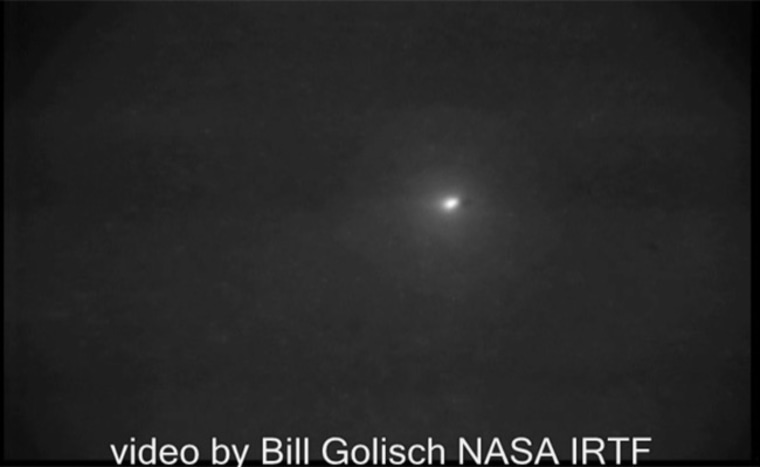A small asteroid passed close by Earth Tuesday, flying within the orbit of the moon while astronomers watched to see if the encounter caused any quakes on the space rock.
The asteroid 2010 TD54 made its closest approach to Earth at 6:51 a.m. EDT (1051 GMT), when it passed within about 28,000 miles of the planet. It was flying over Southeast Asia, near Singapore, at the time. [ Photo of Asteroid 2010 TD54 Flyby.]
Astronomers at the Massachusetts Institute of Technology in Boston used a remote link with a NASA Infrared Telescope Facility in Hawaii to observe the small asteroid, which was up to 33 feet across.
Asteroid 2010 TD54 zips by
There was no risk of the asteroid entering Earth's atmosphere or exploding, and it was too small to survive the fiery entry even if it did. But that did not keep astronomers from taking a close look as the space rock sailed by.
"For 2010 TD54, we want to learn its basic composition and to watch whether its close encounter with the Earth causes any changes," astronomer Richard Binzel, a professor of planetary science at MIT, told Space.com.
Past studies have shown that close encounters with Earth can cause quakes on nearby asteroids that move surface material around, altering space rocks' appearances.
Asteroid 2010 TD54 was discovered Oct. 9 by astronomers with the NASA-sponsored Catalina Sky Survey in Tucson, Ariz.
Asteroid flybys common
Small asteroids that are previously unknown, like 2010 TD54, often pass by Earth.
An asteroid about 16.5 feet across can be expected to pass Earth inside the orbit of the moon about once a day, NASA scientists said. They typically enter Earth's atmosphere once every two years or so, they added. There are an estimated 30 million unknown asteroids in our solar system.
Bigger asteroids about 460 feet wide can cause widespread damage around their impact sites, but for global devastation much larger space rocks would have to strike Earth.
Binzel said he and his colleagues study asteroids by observing them in visible and near-infrared wavelengths of light, which allows them to determine which minerals are present.
"The presence and strength of mineral absorption bands over these wavelengths allow us to interpret their compositions and directly relate these compositions to known meteorite samples, whenever possible," he said.
NASA regularly tracks asteroids and comets that fly near Earth as part of its Near-Earth Object Observations program, which uses a network of ground and space telescopes. The program has tracked 85 percent of the largest asteroids that fly near Earth and 15 percent of asteroids in the 460-foot class, according to the latest report.
NASA also plans to send astronauts to an asteroid by 2025 under new space plan ordered by President Obama. The mission could help scientists better understand the composition of asteroids, as well as develop better methods of deflecting them before they pose a threat to Earth, space agency officials have said.
